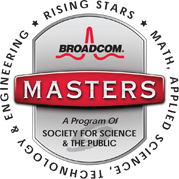Young scientists make the cut
While in Washington, the 30 sixth-, seventh- and eighth-grade finalists will compete in a series of project showcases, individual interviews, and intellectually grueling team trials designed to test each student’s math and science mettle. “It’s intensive,” says Stephanie Lemnios, Broadcom MASTERS program manager at the Society for Science & the Public, which runs the competition and publishes Science News. “We get the students thinking a little bit out of the box.”
Team relays and group activities challenge students to work together. One activity, developed by the Washington, D.C., chapter of Engineers without Borders, is based on a real-life project to improve the lives of low-income villagers in Central America. “To build an innovative workforce of scientists and engineers for the future, our kids need hands-on experiences to develop their science, technology, engineering and math skills,” says Paula Golden, executive director of Broadcom Foundation and director of community affairs for Broadcom Corp. The student groups have only 90 minutes to complete their tasks, but the competition’s organizers believe the kids are up to the challenge.
”These students show that with support and encouragement, middle schoolers can come up with creative approaches to many of the challenges faced by society,” says Elizabeth Marincola, president of SSP and publisher of Science News.
During their week in Washington from September 28 to October 3, finalists will also visit the Capitol to meet their elected representatives, tour historical sites and science organizations, and — perhaps most importantly — hang out with other like-minded kids. “Middle school can be an awkward age,” Lemnios says. “So for these students to meet other kids just like them is pretty cool.” One of the competition’s goals is to get — and keep — students excited about science, technology, engineering and math, she says. So far, the program seems to be succeeding.
In 2011 and again in 2012, the Broadcom MASTERS competition received more than 1,460 entries from students nominated by SSP-affiliated science fairs throughout the country. After competing last year, Ria Chhabra, one of the 2011 finalists, described her experiences in an e-mail: “Even writing about the experience gives me goose bumps and this excited, warm feeling inside.”
Earlier this month, judges shaved the student entries down to 300 semifinalists. In the final round, a panel of five scientists and engineers cut the group down to 30.
Winners will be announced October 2 at an awards ceremony at the Carnegie Institution of Science headquarters in Washington. The top prize is a $25,000 education award, a gift from the Samueli Foundation. Each finalist will receive a $1,000 award from Broadcom for their school, finalists' classrooms will receive supplies and rewards from Elmer's Products.
By Meghan Rosen

